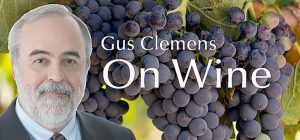Did the extinction of dinosaurs play a part in the creation of wine? While it may sound far-fetched, according to an article in the prestigious, peer-reviewed scientific journal Nature Plants, there is scientific evidence to support the theory.
Researchers discovered fossil grape seeds in South America dating back 60 million years. Fossil grape seed evidence in India dates back 66 million years. The dinosaur extinction occurred 66 million years ago. Coincidence? Science indicates no.
The extinction marks the end of the Cretaceous Period. Approximately 75 percent of all plant and animal species were lost, including all non-avian dinosaurs. That transformed the entire world. With large animals not around to eat or knock down trees, forests reset themselves, becoming much more dense and layered. Trees grew taller, and there were many more of them.
Grape vines are tree climbers. Trees are their natural habitat. As trees grew up, grape vines were right there with them, climbing toward sunlight. Vineyard structures are simulated trees. The increase in birds and mammals also helped. Grape globes are designed to be eaten. Grape seeds are designed to survive digestion, then spread by animals that eat them.
Soft, grape globes, of course, did not fossilize. Seeds did. Although grape seeds are tiny, scientists identified particular shapes and other morphological features. CT scans identified internal structures that confirmed the grape seed identity.
While grape vines existed before the great extinction, the extinction created vast new, favorable conditions and ecological niches. The extinction did not cause the appearance of grape vines, it did favor their spread and diversification, as it did for all flowering plants.
The next time you sip wine or munch on a raisin or a table grape, pause to thank the asteroid that slammed into Earth 66 million years ago. That event may have killed dinosaurs, but it helped give us grape vines. And wine.
Tasting notes
• FIOL Prosecco Rosé Millesimato 2021: Fresh, fruity, elegant, fun. Blend of 85% glera and 15% pinot noir. Ideal for a Sunday brunch. $18 Link to my review
• Baron Philippe de Rothschild Mouton Cadet Blanc X Nathan 2023: Low acidity—for a sauv blanc—allows tasty fruit to shine. People not into sauv blanc will enjoy this effort. $16-19 Link to my review
• Etude Pinot Gris, Grace Benoist Ranch Vineyard, Carneros 2022: Bright, fresh, easy drinker; delivers depth, aromatic intensity. $23-28 Link to my review
• Rodney Strong Vineyards Russian River Valley Reserve Chardonnay 2021: Rich, premium pour. Skillfully touches all the bases of the oak and malo Russian River style; avoids cartoony excess. $46-50 Link to my review
Last round: Drinking wine usually is not the answer, but it does help you forget the question.


